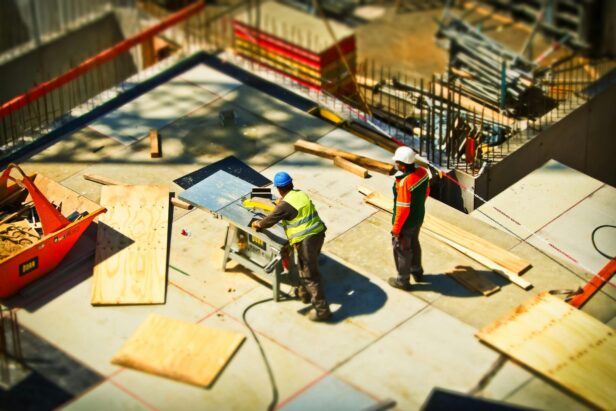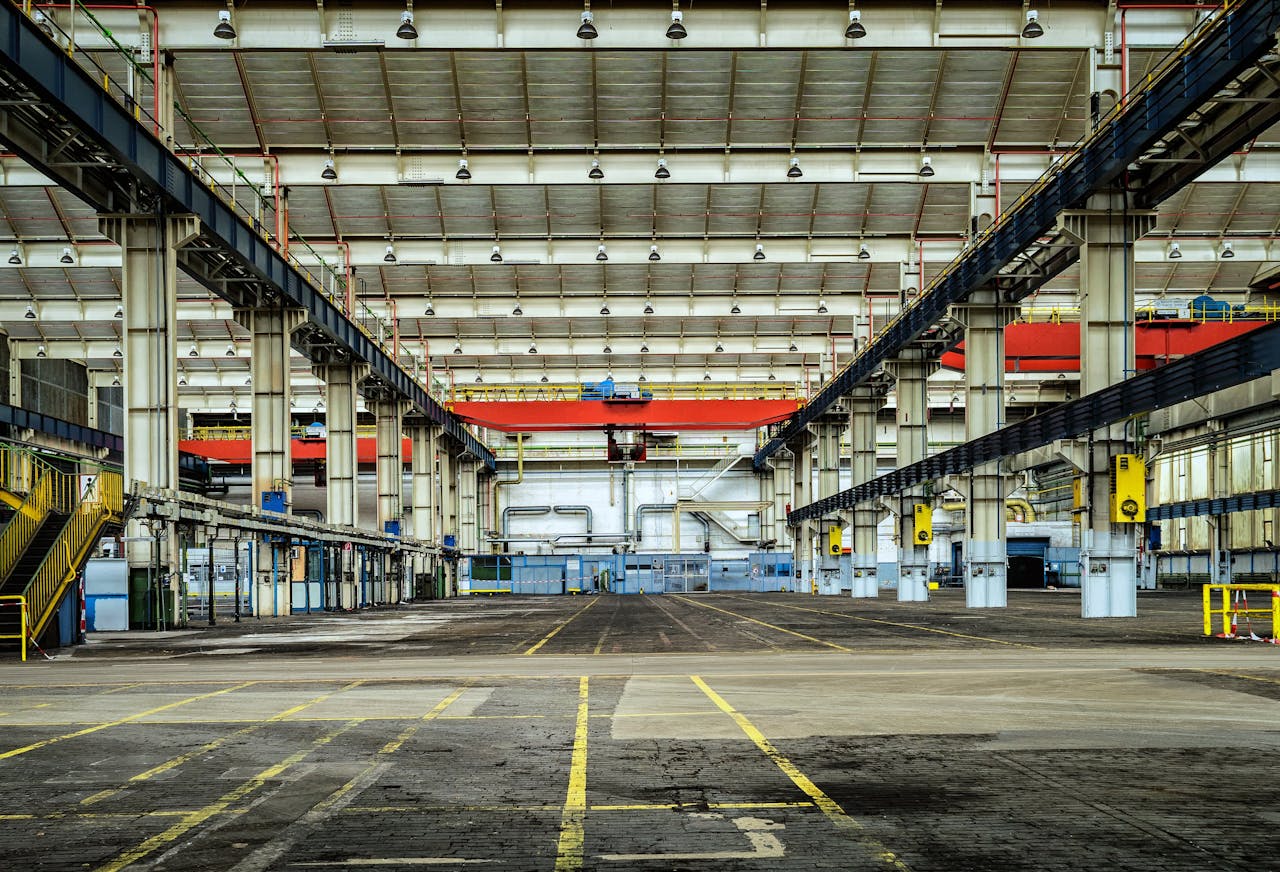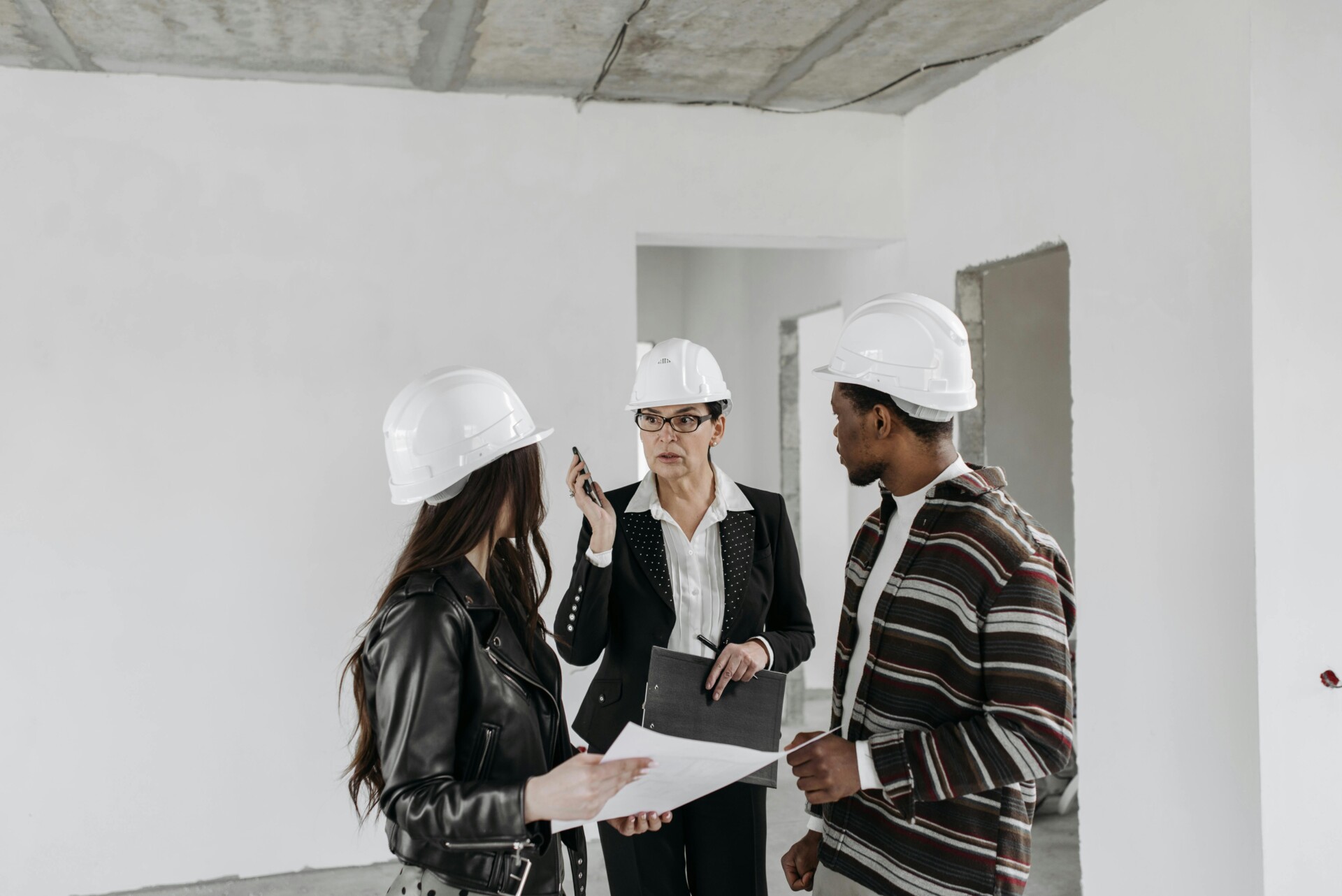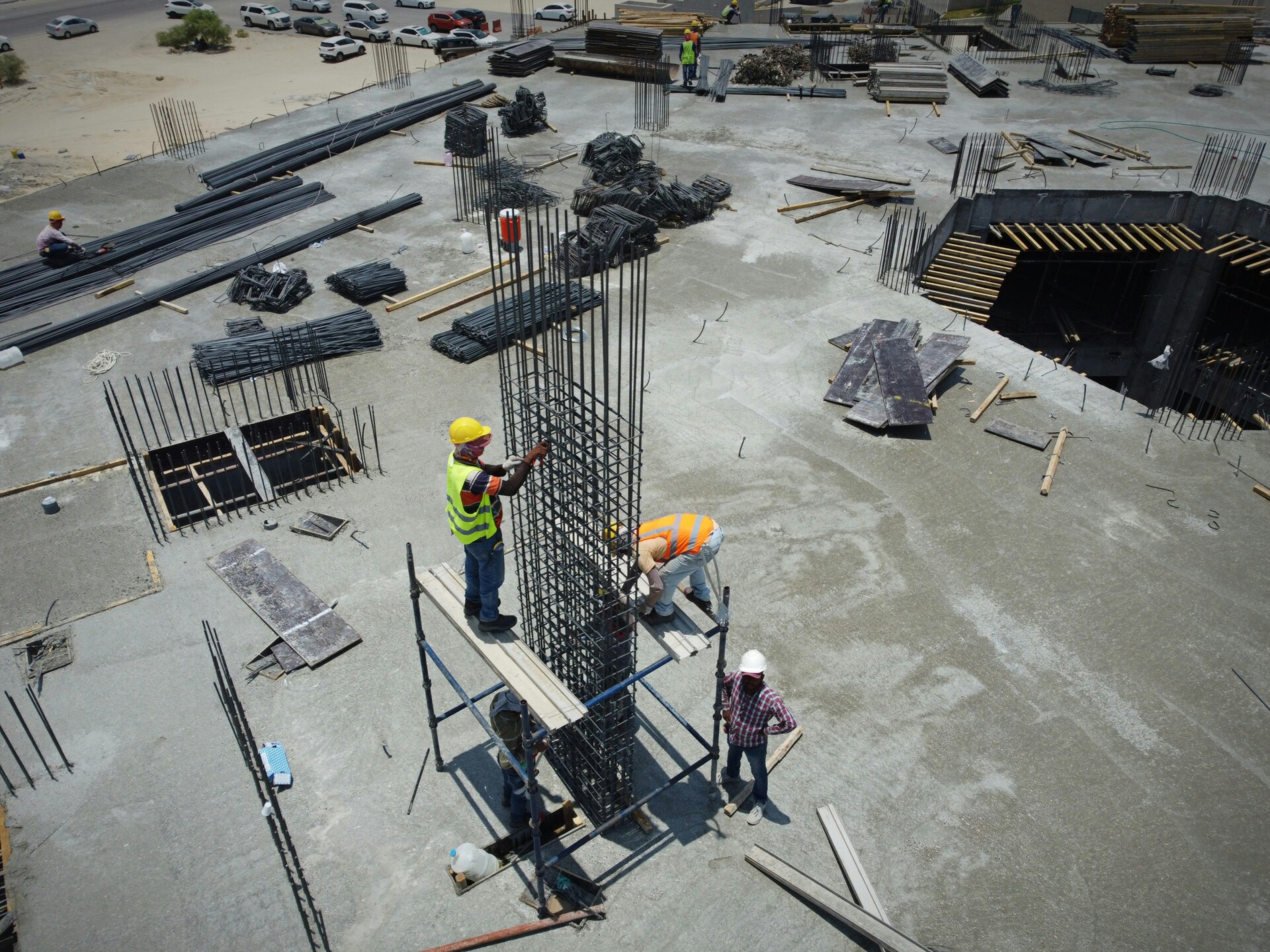E-commerce growth has pushed logistics real estate demand beyond traditional warehousing limits. Today’s commercial property builders face a landscape where automation drives design decisions and sustainability requirements reshape entire developments.
Commercial property builders plan, design, and deliver specialized spaces across logistics warehouses, multi-storey urban facilities, data centers, and business parks. We focus on strategic positioning near transport hubs and power infrastructure while integrating smart building systems that enable automation and distribution efficiency.
Which Asset Types Do Commercial Property Builders Deliver, And What Features Matter?
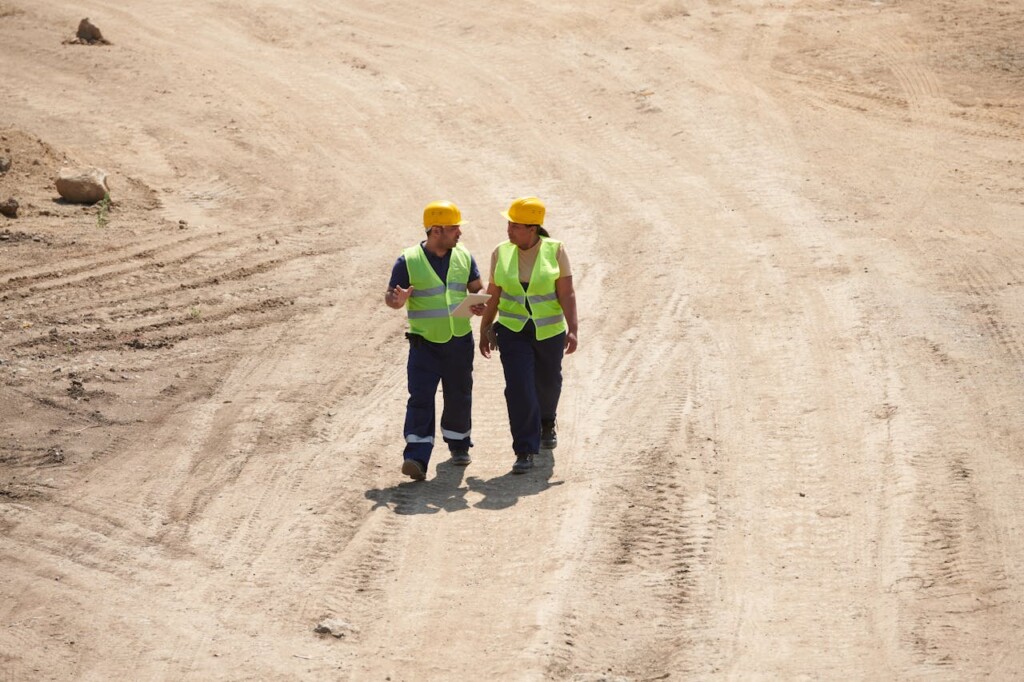
Logistics Warehouses Drive Distribution Networks
Modern logistics warehouses form the backbone of supply chains, requiring specific features to handle today’s distribution demands. We build these facilities with clear heights of 36-40 feet to maximize vertical storage capacity compared to older buildings with 18-32 foot ceilings. This increased height allows tenants to store more product per square foot, improving their cost efficiency significantly.
Truck access remains critical for seamless operations. We design facilities with 130-foot truck court depths and multiple dock doors to accelerate loading and unloading cycles. A typical modern warehouse includes one dock door per 1,000 square feet of space, with enhanced power infrastructure to support conveyor systems and automation equipment that many tenants now require.
Multi-Storey Logistics Maximize Urban Footprints
In dense metropolitan areas where land costs are premium, multi-storey logistics facilities solve the proximity challenge. These vertical warehouses place operations closer to urban customers while maximizing the use of limited land parcels. We incorporate vehicle ramps between floors, allowing trucks to access loading areas on multiple levels.
Each floor features its own dock doors and freight lifts to move goods efficiently between levels. Internal conveyor systems connect the floors, creating smooth product flow from receiving to shipping. While construction costs run higher than single-story facilities, the proximity to consumers reduces transportation expenses and enables same-day delivery capabilities that many e-commerce operations demand.
Data Centers Require Specialized Infrastructure
Data centers demand robust power access and specialized mechanical systems that differ significantly from traditional warehouse construction. We design these facilities with enhanced electrical capacity, often including backup generators and uninterruptible power supply systems to prevent service disruptions. Power loads can reach 15-20 pounds per square foot compared to typical warehouse requirements.
Climate control systems maintain precise temperature and humidity levels to protect sensitive server equipment. We integrate raised flooring to accommodate extensive cabling and cooling infrastructure. Security features include multiple access control layers and surveillance systems to protect valuable computing assets.
Location near major communication trunk lines and utility infrastructure reduces connectivity costs for tenants while ensuring reliable service delivery.
Strategic Location Drives Performance
Across all asset types, proximity to consumers and transport infrastructure directly impacts operational costs and speed to market. We prioritize sites near major highways, ports, and airports to minimize transportation time and expenses. CBRE research indicates that transportation represents 45-70% of logistics costs, making location selection critical for tenant success.
Urban infill locations command higher rents but deliver faster delivery times, particularly important for last-mile distribution. Sites in logistics corridors offer access to skilled labor pools and existing transportation networks. We evaluate each location based on its ability to support tenant operations while providing long-term value appreciation potential.
How Do Commercial Property Builders Handle Site Selection, Land Acquisition, And Approvals?
Site selection drives project success. We evaluate proximity to consumer markets, utilities capacity, and skilled labor pools early. Major transport routes reduce logistics costs and improve access.
Grid capacity matters immediately. High-demand facilities like data centers require substantial power infrastructure. We assess existing utility capacity and coordinate upgrades before site commitments.
Due Diligence And Land Acquisition Process
We conduct comprehensive due diligence covering environmental assessments, soil conditions, and title verification. This includes geotechnical studies and environmental site assessments to identify potential contamination or development challenges.
Land acquisition involves negotiating purchase agreements with contingencies for permitting approvals. We structure deals that protect developers while the entitlements process unfolds, often lasting months or years depending on jurisdiction complexity.
Master planning coordinates site layout with local development requirements. We align building placement, parking, utilities, and access roads with zoning codes and setback rules from the start.
Entitlements And Government Approvals
Zoning approval establishes permitted uses and development standards. We work with municipal planners to confirm industrial or commercial classifications match intended operations.
Site plan approval covers building placement, traffic flow, storm water management, and landscaping requirements. This process varies significantly between jurisdictions but typically requires multiple review cycles.
Building permits follow once site plans gain approval. We prepare construction documents that satisfy local building codes, fire safety standards, and accessibility requirements for commercial properties.
Economic Incentives And AHJ Coordination
Economic development incentives can reduce project costs substantially. Tax increment financing, property tax abatements, and job creation credits often apply to major commercial developments.
Early coordination with the Authority Having Jurisdiction streamlines permitting timelines. We establish relationships with building departments, fire marshals, and utility coordinators before formal applications begin.
State and local economic development agencies offer additional support. Programs targeting specific industries like logistics or data centers provide grant opportunities and expedited processing.
Greenfield Versus Brownfield Site Comparison
Greenfield sites provide development flexibility but require full infrastructure buildout. These locations offer more space for future expansion and fewer existing constraints on design.
Brownfield sites offer existing infrastructure and urban proximity but may require environmental remediation. According to HUD financing experts, brownfield developments typically have more central locations and existing transportation links, though they may involve higher remediation costs.
Utilities capacity analysis determines which option fits project requirements. Greenfield sites may need utility extensions while brownfield locations often have existing services that require upgrades or modifications.
What Financing And Delivery Approaches Are Common In Commercial Development?

Commercial development requires clear financing and delivery strategies that match project goals and timelines. We work with developers and property owners to structure approaches that balance speed, customization, and capital efficiency across different asset types.
Speculative Development For Faster Market Entry
Speculative builds deliver ready-to-occupy shells that minimize tenant delay. These properties target broad market demand with standardized features like 32-foot clear heights, ample truck courts, and flexible column spacing. We design spec buildings to accommodate multiple potential uses while meeting current market standards.
The trade-off centers on speed versus customization. Developers can deliver spec properties within 8 to 12 months because design and permitting happen before tenant commitments. This approach works well in high-demand markets where faster occupancy matters more than tenant-specific modifications.
Financial analysis shows spec development carries vacancy risk but offers quicker cash flow once leased. We help developers evaluate market absorption rates and competitive positioning to determine whether spec development fits their investment strategy.
Build-To-Suit Projects For Operational Precision
Build-to-suit projects create facilities tailored to specific tenant operations. These developments accommodate specialized requirements like temperature control systems, custom dock configurations, or unique power infrastructure. We coordinate design specifications with tenant operational needs from project start.
Build-to-suit arrangements require longer development timelines, typically 12 to 18 months, because customization adds design complexity. However, tenants get facilities that optimize their operations while developers secure long-term lease commitments, often 10 to 20 years.
Contract structures in build-to-suit projects address cost overruns, change orders, and completion schedules. We help structure agreements that protect both developer and tenant interests while maintaining project momentum through clear approval processes.
Sale-Leaseback Structures For Capital Optimization
Sale-leaseback arrangements allow companies to unlock capital from existing real estate while maintaining operational control. Companies sell their facilities to investors and lease them back under long-term agreements. This approach provides immediate capital for business expansion without relocating operations.
We coordinate sale-leaseback transactions that align property values with operational requirements. The structure requires careful lease term negotiation to balance the seller’s operational needs with investor return expectations. These transactions often include options for property improvements or expansions.
Sale-leaseback financing appeals to companies seeking to optimize their balance sheets while preserving facility control. The approach converts fixed assets into working capital that can support core business growth rather than real estate ownership.
Debt And Equity Financing Integration
Commercial development typically combines debt and equity financing to optimize capital costs and risk allocation. Construction loans provide short-term funding during development, while permanent financing supports long-term operations. We help structure financing that matches project cash flow patterns.
Debt financing offers lower capital costs but requires collateral and personal guarantees. Banks and credit unions typically provide 70 to 80 percent loan-to-value ratios for well-located projects with strong sponsors. Interest rates and terms vary based on project risk and borrower strength.
Equity financing brings capital partners who share project risks and returns. Private equity funds and joint venture partners often seek 15 to 25 percent returns, depending on project risk profiles. We coordinate between debt and equity sources to create balanced capital structures.
Risk mitigation strategies include construction cost guarantees, completion bonds, and pre-leasing requirements. These tools reduce lender and investor concerns while providing project certainty. Financial analysis helps determine optimal debt-to-equity ratios based on project characteristics and market conditions.
How Are Sustainability And Long-Term Operations Built Into Projects?
Modern commercial construction integrates sustainability measures that reduce operational costs while supporting long-term business goals. We design buildings with renewable energy systems like solar panels, EV charging stations, LED lighting, and rainwater harvesting to cut utility expenses and reduce carbon footprints. These features go beyond compliance to create competitive advantages for property owners and tenants.
At EB3 Construction, we focus on operational efficiency through intelligent building design. Clear heights accommodate automation equipment and robotics, while optimized circulation patterns support smooth truck movement and loading operations. These design choices improve throughput and reduce operational bottlenecks, directly impacting tenant profitability.
Renewable Energy Integration
Solar panel installations provide immediate utility cost reductions and long-term energy independence. We coordinate with electrical engineers to size systems appropriately for building loads and local grid requirements. Battery storage systems extend solar benefits to evening operations, particularly valuable for 24-hour logistics and manufacturing facilities.
EV charging infrastructure supports the growing fleet electrification trend. We install conduit and electrical capacity during construction to accommodate future charging stations. This forward-thinking approach costs less than retrofitting and positions properties for changing transportation needs. Strategic placement near employee parking and loading areas maximizes utility.
LED lighting systems reduce energy consumption by up to 80% compared to traditional options. Smart controls adjust lighting based on occupancy and daylight availability, further reducing operational costs. We specify commercial-grade fixtures designed for industrial environments, ensuring long service life and minimal maintenance requirements.
Water Management And Conservation
Rainwater harvesting systems capture precipitation for landscape irrigation and cooling tower makeup water. We design systems sized for local rainfall patterns and building water demands. Storage tanks integrate seamlessly with building architecture while providing reliable water sources during drought conditions.
Low-flow fixtures and water-efficient landscaping reduce overall consumption. Native plant selections require minimal irrigation once established. Permeable paving materials in parking areas reduce stormwater runoff while supporting groundwater recharge. These measures help properties achieve ESG goals while reducing utility expenses.
Health And Wellbeing Features
Indoor air quality systems support employee health and productivity. We specify filtration systems designed for commercial environments, including provisions for future upgrades. Natural lighting maximization reduces energy costs while creating more pleasant work environments. Strategic window placement and skylights bring daylight deep into building interiors.
Flexible floor plates accommodate changing business needs without major renovations. Open spans and movable partition systems allow tenants to reconfigure spaces as operations evolve. This adaptability extends building useful life and maintains tenant satisfaction over time.
Automation And Technology Support
Building designs accommodate automation and robotics integration from the start. Adequate power infrastructure, network connectivity, and equipment access support modern warehouse and manufacturing operations. We coordinate with technology consultants to ensure buildings can handle future automation upgrades without major infrastructure changes.
Smart building systems monitor energy consumption, HVAC performance, and equipment status in real-time. Property managers receive alerts about potential issues before they become costly problems. This proactive approach reduces maintenance costs and extends equipment life.
Ongoing Performance Optimization
Property management services help maintain system performance throughout the building lifecycle. Regular monitoring identifies efficiency improvements and prevents small issues from becoming major expenses. We work with property management teams to develop maintenance schedules that preserve warranty coverage while minimizing operational disruptions.
Energy benchmarking and performance tracking demonstrate sustainability achievements to tenants and investors. Annual reports document utility cost savings and environmental benefits, supporting lease renewals and property valuations. This data-driven approach validates sustainability investments and guides future improvements.
Conclusion And Next Steps

Successful commercial development follows a clear sequence that starts with defining your objectives and ends with operational excellence. Start by establishing your asset type requirements and target locations based on proximity to labor markets, transportation networks, and utility infrastructure. These foundational decisions shape every aspect of your project’s feasibility and long-term performance.
Execute comprehensive site evaluation and due diligence to identify potential challenges before they become costly obstacles. Work with experienced teams to navigate entitlements and secure utility connections early in the process. Coordinate with the Authority Having Jurisdiction to streamline permitting and avoid regulatory delays that can derail project timelines. This groundwork creates the foundation for successful capital planning and construction execution.
Select your delivery and financing approach based on your timeline needs and operational requirements. Speculative builds offer faster occupancy for standard operations, while build-to-suit projects provide customized solutions for specialized requirements. Sale-leaseback structures unlock capital while maintaining operational control. Integrate sustainability upgrades during the planning phase to capture long-term cost savings and meet evolving ESG requirements that increasingly influence tenant decisions and property values.
Ready to transform your commercial development vision into reality? Connect with EB3 Construction to align your capital planning, permitting coordination, and construction management for seamless project delivery.

